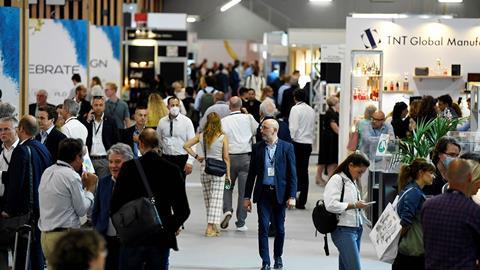
Packaging has a vital role to play in the future of our planet. It is a bold claim, but one that rings truer with every passing year. Easyfairs gives its views on this acceleration in our latest opinion article.
As the organisers of Packaging Innovations & Empack, Featuring Contract Pack & Fulfilment, we get to see first-hand the progress made every year. And, with our last show being our most successful yet, it’s clear to us that interest in sustainable, future-proof packaging solutions is growing rapidly.
Consumers’ minds are made up
Ultimately all steps in the packaging supply chain have to serve the market, and the market is driven by what consumers want. And today’s consumers could not be clearer about what they want.
Study after study shows consumers increasingly actively look for sustainable claims when deciding what to purchase, and they claim to be willing to swap brands and pay more to shop more sustainably. This is borne out by the raw numbers, which show that products making ESG claims have averaged 28% cumulative growth over the past five years compared to 20% for products that made no mention of ESG, according to a McKinsey report.
Demographic change means that consumers are increasingly interested in the provenance of green claims, too. Gen Z is on the cusp of becoming the world’s largest consumer demographic, and it is a generation marked out by its green sensibilities and its digital competence.
Gen Z consumers are the first ‘digital natives’ – people who grew up with the internet as a fixture of everyday life – and frequently do their research before deciding which brands to support. Packaging that offers provable benefits in the circular economy is inherently more appealing to this ever-more influential demographic.
Packaging producers’ customers – brands, packers and processors – are under the microscope like never before. A sustainable pack designed for the circular economy helps provide tangible evidence of a product’s commitment to sustainability that goes a long way towards building a relationship with eco-conscious Gen Z consumers. Genuine sustainability will soon become the most effective marketing message any product could ask for – and packaging producers are central to this.
Easy to digest
The problem with the term ‘sustainability’ is that, while it is a useful umbrella term that covers a number of related topics, it can become a bit woolly and confusing when used in consumer messaging. Everyone’s idea of what makes something ‘sustainable’ is different. Is it more about making a pack recyclable? Reducing plastic? Overall carbon footprint reduction? Being made with ethically-sourced, renewable materials? The list of questions goes on.
The circular economy provides a simple, easy-to-digest framework that can be used to help consumers understand what they need to do with their packaging at end of life. This is important, as a Deloitte study found consumers need help understanding recycling schemes and the information around disposing of or recycling packaging. The circular economy empowers consumers by giving them an active, clearly defined role in the packaging journey, and enables producers to provide greater clarity on just what their sustainable packaging offer really means.
Performance matters
The key challenge in all of this is to ensure the packs remain performant through the supply chain. A pack that disintegrates before it can be opened by a consumer does nothing but create waste, no matter how sustainably it may be produced – and waste is the antithesis of the circular economy.
It is important to balance sustainable packaging design with performance and aesthetics, as many sustainable or renewable packaging materials are not inherently suited to the rigours of the modern supply chain. This is why innovation and materials science are so important to the industry – they can augment the performance of a pack through structural design techniques, barrier coatings, reclosing mechanisms, and more, all without compromising its recyclability.
Historically, packaging producers may have been hesitant to adopt these innovations owing to the costs and the unproven nature of new technology. Now, as we see on our show floor every year, this hesitancy is fading – as more producers get involved with circular packaging innovations, costs are falling, and the performance of these alternative products is being proven. Bio-based polymers, high-performance monopolymers, freezer-proof recyclable paper packaging, innovative carton shapes, and more could all be the future pillars of a more sustainable packaging industry.
Previously, switching from a take-make-waste model might have required a great leap. But, as times have moved on, that leap is now like a small step. Many of these innovations are designed to be compatible with existing packing machinery and tooling, and many of the machinery solutions on show at Empack are designed to create sustainable packaging solutions quicker and more efficiently, all while boasting smaller footprints and enhanced automation features.












No comments yet